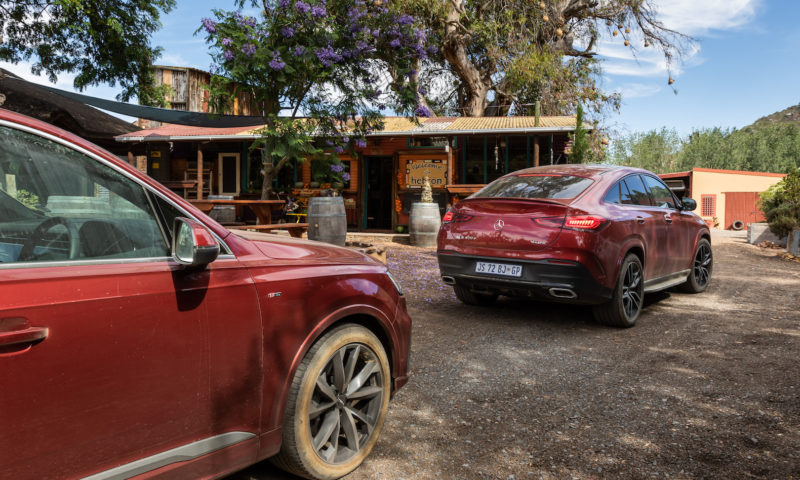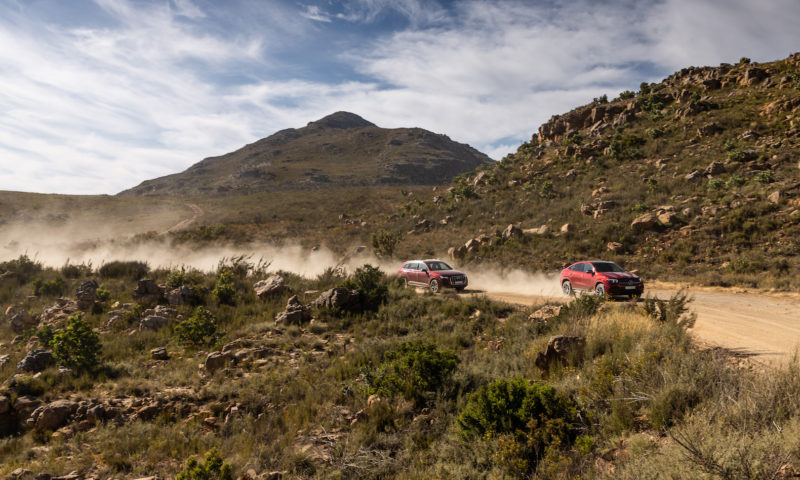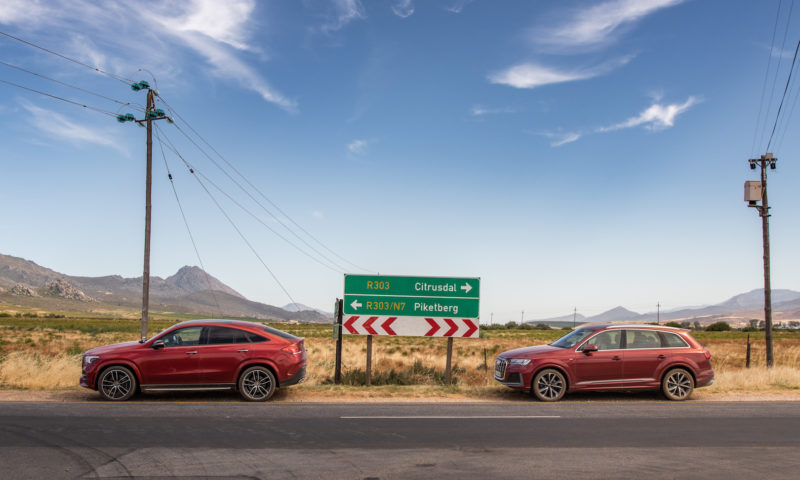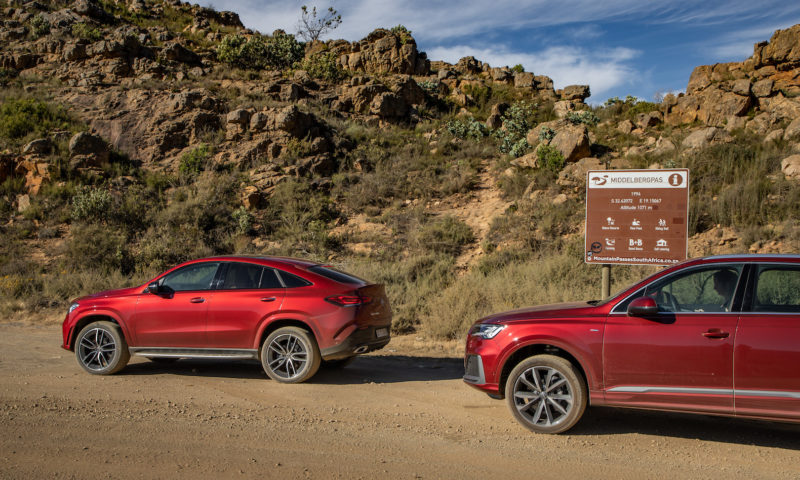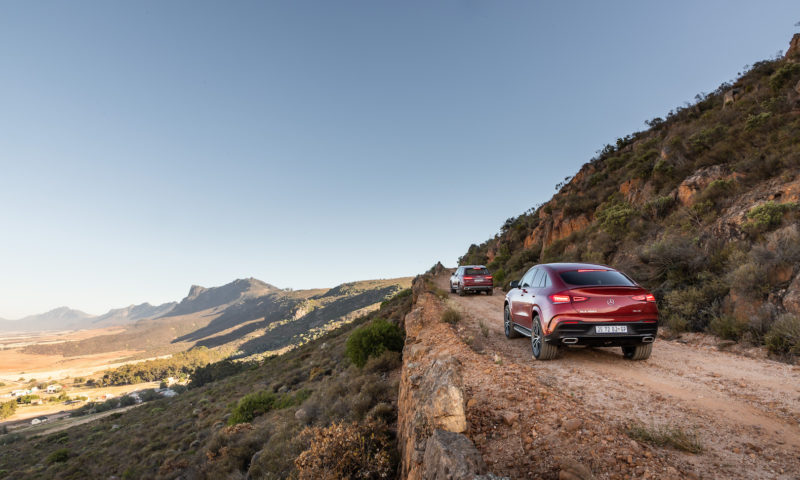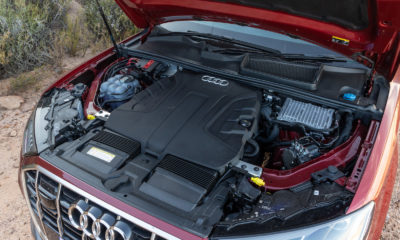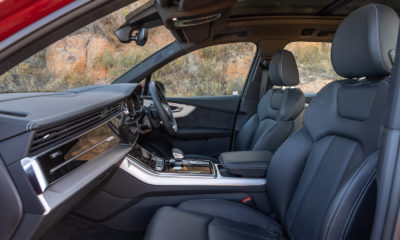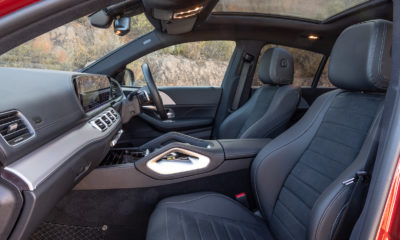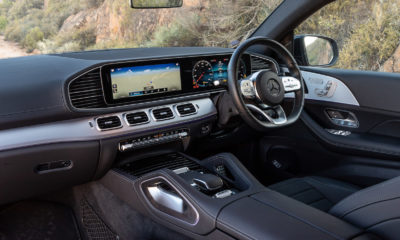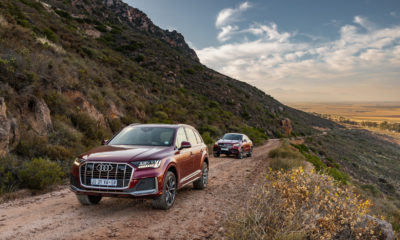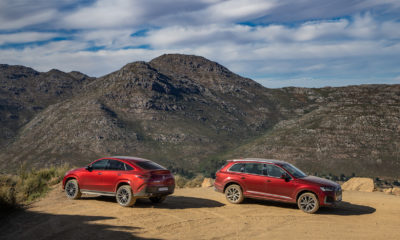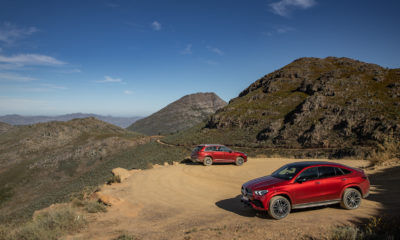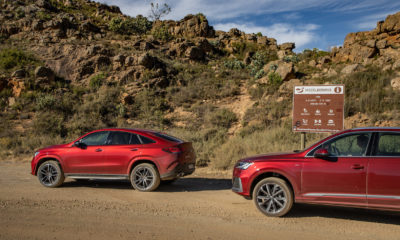While power outputs range from 183 kW to 243 kW, the price discrepancy is bang on R500 000 and even their body shapes differ; these two new German lifestyle cocoons offer seating high enough off the ground to make you scoff at the world. For some, that’s all that matters. But not us. Neither has any real pretence of extreme off-road capability, so a 500 km roundtrip from the endless plains of the Tankwa Karoo to the high plateau of Middelpos Pass outside Citrusdal would decide the winner.
Audi Q7 45TDI quattro Tiptronic
We were a handful of kilometres into our Epic Drive with all four of the Audi’s wheels safely on bitumen when something began to niggle at the back of my mind that I couldn’t shake. I last drove a Q7 back in 2017; an uneventful occasion of which I remember little, and first impressions are Audi doesn’t seem to have moved its premium-SUV game along much since then.
The initial deduction is Ingolstadt has deliberately gone against the grain of the latest troop of obnoxious, in-your-face SUVs – ahem, just like the Mercedes-Benz GLE Coupé following closely in its tyre tracks – and instead styled the Q7 so conservatively, it’s as if it would prefer it pass by without drawing any attention whatsover. Each to their own, I guess.
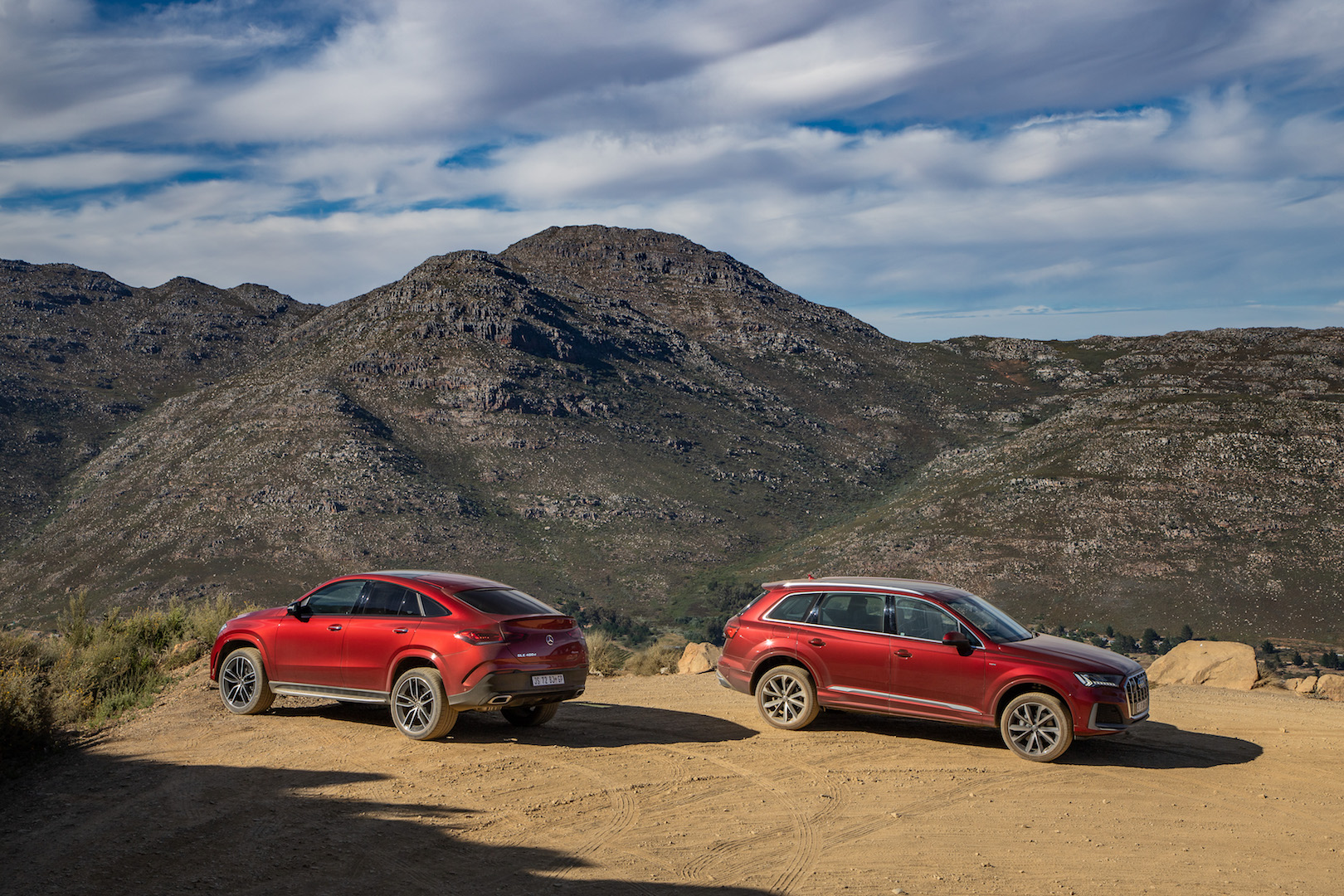
Granted, there’s a bit more brightwork than its predecessor and a fresh LED daytime-running-light signature to go with Audi’s party-piece dynamic turn signals that light up like the graphic equaliser on your old boombox every time you indicate. Not that the driver gets to enjoy this from inside the cabin but there’s not much else aesthetically exciting. No bold styling lines, just plain flanks, demure details and the overall look of a bloated estate car. And yes, those silver trim bits where the integrated exhausts should be … they’re for show.
Of course, when you’re behind the wheel of Audi’s seven-seat leviathan, none of it matters. What does matter is the smooth 3,0-litre V6 turbodiesel, complete with an AdBlue after-treatment system to minimise nasty NOx emissions. We know diesel is no longer de rigeur in most of the Free World after #Dieselgate, and you won’t find a new Q7 TDI on sale in the US or UK alongside the firm’s latest plug-in hybrid and TFSI drivetrains, and yet, this proven turbodiesel is your only choice locally. Why? Perhaps the southern tip of Africa – with its unstable electricity supply and iffy fuel quality – will one day become the last outpost of oil-burners when the rest of the world has gone full electric. Perhaps it’s already happening, who knows? We’re certainly not complaining because the easy-going, unstressed diesel is still the best way to motivate a 2,3-tonne SUV, no doubt about it.
With 183 kW on tap, the Audi may be less potent than the Mercedes-Benz but a claimed 0-100 km/h sprint time of 6,9 seconds means it can hang onto the coattails of hot hatches and deliver excellent economy, shading Audi’s claimed/combined figure of 8,00 L/100 km. Average consumption on our trip didn’t exceed 8,80 L/100 km, impressive when you consider its turbo ushers in 600 N.m of torque at 1 500 r/min.
It is the Audi’s eight-speed Tiptronic that proves a bit of a quandary though. Its shifts are so smooth and imperceptible, you don’t notice it sneak into the highest gear at the earliest possible moment, regardless of the setting you’ve chosen in the Dynamic Drive Select. Put your foot down to overtake and there’s no oomph, followed by a moment’s hesitation before the gearbox jumps down a few cogs and sends you surging forward with unseemly vigour … usually as the opportunity to overtake has passed. Despite copious amounts of torque, the drivetrain won’t allow you to roll on power smoothly in gear. Forward progress seems to come about only after a momentary lurch, followed by a kick-down of the gearbox. Driven in isolation, this trait is bearable enough, an unfortunate symptom of a heavy, slightly ponderous SUV you might infer; something you can learn to handle by manually selecting gears. However, having just stepped into the Mercedes-Benz, with its 9G-tronic cog swapper contradicting all that and responding with the alacrity of a sportscar, I realised the Audi should be better.
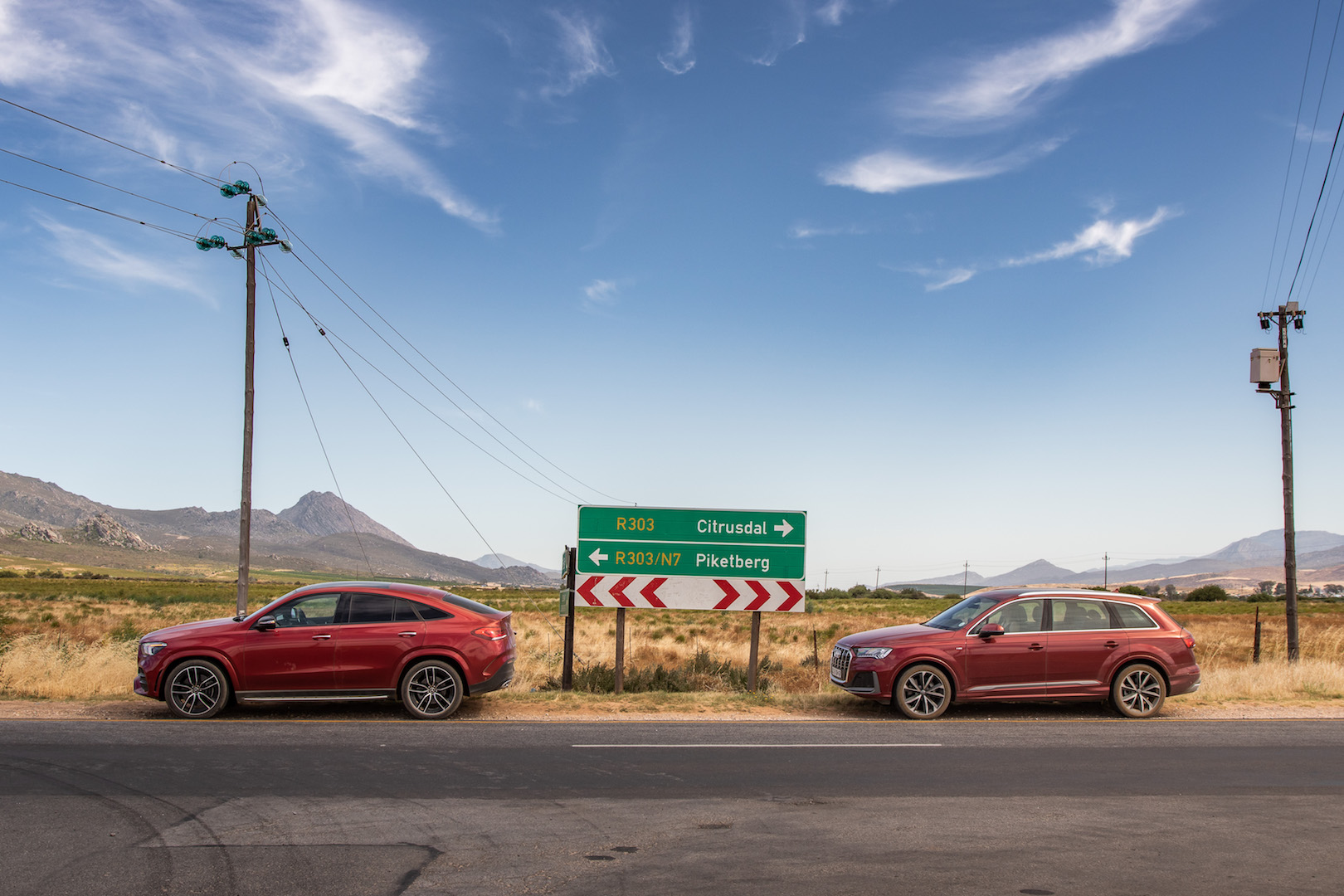
Beyond the sleepy town of Citrusdal, which seemed quieter than usual on the day, the magnificent R303 ascended purposefully into the Roggeveld Mountains. Soon the tarmac road, adorned with hairpins and demanding off-camber 90-degree turns – a stern test of any vehicle – turned to dust. The quality of this road varies greatly depending on the time of year and recent rainfall. Although it can be driven in a normal car and, by Jove, you do see locals in an assortment of heavily weathered Toyota Tazzes and the like, the section leading to the summit of the pass can be rough and a real tyre killer. Fortunately, the Audi’s standard-fit Continentals and Merc’s Pirellis were holding together just fine.
With our eye on pushing hard up the pass, it was clear that of the two, the Q7 gave in to understeer earliest despite its clever rear-wheel steering. However, when the Audi did let go, it did so with reasonable grace, delivering plenty of warning before washing wide, allowing the electronics to gather everything up with the traction control light flashing on the instrument cluster. The steering, although slightly syrupy and lacking the feel of the Mercedes, was pleasingly thin-gripped and decently weighted with lock wound in. The suspension gamely resisted roll in the sharp corners and retained plenty of composure on the pass. The result was contentment to glide along at almost half-speed without feeling the need to really extend the 45 TDI’s performance.
Excess isn’t rebellion
Mercedes-Benz GLE400d Coupé 4Matic 9G-tronic
Almost 550 metres of elevation later, we’d reached the summit of Middelpos Pass, right on cue for Peet to find a suitable vantage point and start snapping away at our two rubies in the rough. This is one of my absolute favourite mixed-surface mountain roads. I enjoy it because even though it doesn’t break any altitude, gradient or length records, the combination of graceful curves, raw mountain beauty and wide field of view on either side at the top lends it an almost ethereal quality. Perhaps only Die Hel delivers such satisfying scenery when you pull off to take it all in.
Not that we were doing that because Peet had put us to work attacking the last two switchbacks on the southern side of the pass, leaving huge contrails of dust in our wake. We pulled a U-ey (easier to do in the Audi thanks to its rear-wheel steering) and gladly obliged for the camera. From the wheel of the big Benz, I was simply blown away by the quick-witted chassis. The steering, too, was not only full of feedback with a few degrees of lock dialled in like it was in the Audi, it felt alive along its entire circumference. The front end was so keen to tuck into the first hairpin and gripped so tenaciously that it instantly kicked the rear out, leaving the 325-wide rear tyres dancing playfully atop the hot, dusty surface. This is the sort of agility that usually brings trouble in a tall-riding 2,2-tonne SUV. I kept the throttle open, fed in opposite lock and the GLE did a majestic powerslide before deftly coming back in line with the Q7 at close quarters triggering the blind-spot monitor, flickering a light in my wing mirror. As is so often the case in these moments, Peet had trained his camera on the top hairpin closest to him and he missed capturing the heroism. Posing the age-old question: if a broadslide in the middle of the Cederberg wasn’t caught on camera, did it even happen? I know it did. That Mercedes-Benz is a beast!

In pure performance terms, the GLE400d approaches beast levels, too. The twinturbodiesel produces 243 kW and 700 N.m of torque at 1 200 r/min, so despite the considerable kerb weight, there is no lethargy. You possess full control of the gears in manual mode (unlike the Audi) and can feed in power on your terms and revel in the drivability. Everything about the drivetrain is harmonious. Pin the throttle to the floorboards and 0-100 km/h is dispatched in a claimed 5,7 seconds before maxing out at 240 km/h. It handles with all the self-confidence its look-at-me exterior proclaims. From its enormous “diamond” grille and sporty crease lines to its pert fastback rear end with integrated spoiler and macho, squared-off wheelarches: the GLE400d Coupé makes a statement. What that statement is supposed to be – besides wanton excess I suppose – isn’t necessarily clear but a lot of people we passed seemed to identify with it, giving it a second glance … or seven. While the Audi exudes cultured restraint, the Mercedes is a big, handsome thing, and the sweptback silhouette goes a long way to fixing the awkward styling of its non-coupé sibling with that overt tumbledown line we remarked on in our December issue.
Tenacious grip, quick steering and an eager twinturbodiesel performance provide the swings to the Merc’s less-endearing roundabouts. Next to the Audi, an average fuel consumption of 10,90 L/100 km on our trip did seem overly profligate and no matter the driving mode or style employed, it rarely dropped into single digits. The ride quality was also fractious, proving tolerable rather than comfortable even in Comfort mode. Our test unit was up-specced with optional air suspension and yet it made a meal of sudden surface disruptions, bumbling along uneven roads with the tell-tale high-frequency chop that so often plagues air-assisted springs. This was a disappointment as we’d bemoaned the ride quality in the conventionally suspended GLE we tested in 2020, assuming air ride would banish its harsh-riding ways. At least we know now.

With time to kill before we headed into town for a well-earned breakfast, we took the opportunity to inspect the interiors in more detail. There is no denying the highly functional and pacifying quality of the Audi’s cabin; emphasised by horizontal lines stretching the length of the facia. But the touchscreen-based interface isn’t overly intuitive and the firm’s digital Virtual Cockpit has become familiar across Volkswagen Group products, to the point that it doesn’t surprise and delight quite like it used to.
By comparison, the Mercedes-Benz’s cabin – its huge array of ambient lighting notwithstanding – is more individualistic and pragmatic. The displays are operated via touch or clever steering wheel-mounted thumb controls, so your hands never have to leave the steering wheel. The right thumb works the display in the instrument binnacle and the left does the same for the central screen. Once acclimatised, it is easier than mastering the dexterity required to hit a touchscreen with the index finger of your left hand. Simple really.
The verdict
The new Audi Q7 is by no means a slouch. It’s competent, comfortable, efficient and with a third row of seats, infinitely practical. But nothing about it makes me want to give it an overwhelming recommendation. As we know, the Q7 shares the Volkswagen Group’s MLB platform with the Bentley Bentayga, Lamborghini Urus, Porsche Cayenne and Volkswagen Touareg. Like a household with five children all vying for their parents’ affection, trying to be individuals and find their way in the world, the law of averages dictates they cannot all be the first team sports captain, prom king or valedictorian. The Audi Q7 seems destined to soldier on in the shadows of its siblings.
On the other hand, the Mercedes-Benz suffers no such crisis of confidence. The extrovert styling, innovative interior and powerful engine all make it a worthy offering. The sometimes choppy, occasionally sloppy ride does blemish its report card a little, but on the whole it’s an acceptable trade-off for the agility it adds. The GLE Coupé does a brilliant job of contradicting your preconceived notions of what an SUV should be. More than that, it’s simply the one I find myself drawn to and the one I’d most like to park in my driveway.







